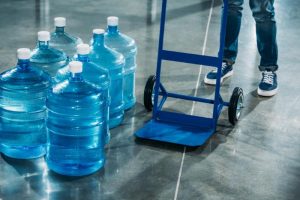How do water restoration companies ensure the safety of their workers and the public during the restoration process?
Water damage can be a serious problem for homeowners and businesses, and the restoration process can be complicated and potentially hazardous. As a result, it is important for water restoration companies to take steps to ensure the safety of their workers and the public during the restoration process.
(Looking for “Comprehensive Water Testing“? Contact us today!)

One of the primary concerns during water restoration is the potential for mold growth. Mold can grow quickly in damp or humid environments, and exposure to mold can be harmful to human health. To minimize the risk of mold growth, water restoration companies will often use air scrubbers and dehumidifiers to dry out the affected area and prevent moisture from lingering.
Another important safety consideration is the use of personal protective equipment (PPE). Water restoration workers may be exposed to a variety of hazards, including electrical shock, contaminated water, and sharp objects. To protect themselves from these hazards, workers will typically wear PPE such as gloves, eye protection, and respirators.
Water restoration companies will also take steps to ensure the safety of the public during the restoration process. This may involve setting up barriers or warning signs to prevent people from entering the affected area, or using air filtration systems to prevent mold spores from spreading to other parts of the building.
In addition to these measures, water restoration companies will typically follow a set of industry best practices and guidelines to ensure that the restoration process is carried out safely and efficiently. These guidelines may be established by industry organizations such as the Institute of Inspection, Cleaning and Restoration Certification (IICRC), or may be established by state or local regulatory agencies.
For example, the IICRC has established a set of standards for water damage restoration that cover topics such as inspection and assessment, water extraction, drying and dehumidification, and cleaning and sanitizing. By following these guidelines, water restoration companies can ensure that they are using the most effective and safe methods for restoring water-damaged properties.
When choosing a water restoration company, it is important to look for a company that takes safety seriously and has a proven track record of following industry best practices. Some key factors to consider include the company’s training and certification, their safety record, and their experience working with similar types of water damage.
It is also important to communicate any concerns you may have about safety with the restoration company before work begins. This may include asking about the specific equipment and methods they will use to ensure worker and public safety, as well as any precautions they will take to prevent the spread of mold or other hazards.
In conclusion, water restoration companies must take a variety of measures to ensure the safety of their workers and the public during the restoration process. These measures may include using air scrubbers and PPE, following industry guidelines and best practices, and communicating openly with clients about safety concerns. By taking these steps, water restoration companies can help to minimize the risk of injury or illness and ensure that the restoration process is carried out safely and efficiently.

